
The national emblem actually arrived from the Sarnath Lion Capital of Emperor Ashoka who was the ruler of this finicky land during 272 BCE- 232 BCE. The sculpture exhibits four lions on top of the pillar. The space is shared also with an elephant, horse and bull. Lions, on the base, are alienated artistically with a lotus. The stone looks marvelous because of the excellent looking carved Dharma Chakra (Wheel of Law).
The emblem was actually adopted by the Indian Government with lot of owner on 26th January, 1950. However, the representative and official symbol displays three out of the four lions along with the famous Dharma Chakra right in the center of the base presently. A bull and horse accompany the lions at both the sides. The bright and prominent phrase “Satyameva Jayate” in the Devnagari script of India had been embossed on the base. A powerful and dignified idea (“Truth alone Triumphs”) has been demonstrated for the people of India.
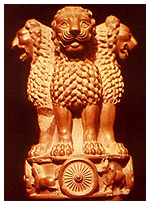
The National Bird of India, the peacock, is standing as a significant symbol of prettiness, grace, pride and holiness. Some of the features of the Indian National Bird are fan-shaped crest of feathers, a white patch right under the eye and elongated, slender neck. The male peacocks are more colorful as compared to the female species. Male peacocks look lovely for their 200 lengthened feathers and radiant blue breast and neck. They show their happiness and display their elongated feathers at the commencement of the monsoons. The female species of peacocks can easily be understood seeing their colors (Brownish). The size of the female is comparatively smaller than male ones. The harsh voice of peacocks is a stark contrast to their prettiness. Fanning out the tail and preening its feathers, the male peacocks exhibit pretty dance form. It’s truly a wonderful sight to gaze at. The sacred bird, peacock, is protected both by the religious outlook and by parliamentary decree.

Adopted on March 22nd, 1957, the National Calendar was based on the Saka Era. A normal year has 365 days. Dates of the Indian National Calendar have a correspondence with the Gregorian Calendar Dates. It has been seen that the 1st Chaitra (the month according to the Hindu calendar year) generally falls on 21st or 22nd March in leap year.
For few official purposes, such as, the Gazette of India, news broadcast by all India Radio, calendars issued by the Government of India, the Government communications addressed to the general public, both the Indian National Calendar and the Gregorian calendar are used.
Saffron, white and green, all these three colors are sequentially placed one after the other in the rectangular shaped Indian flags. Three horizontal breadths were used by three different colors. All of these colors signify and symbolize different things. Saffron stands for courage and sacrifices where as white is a symbol of purity. On the other hand, green denotes fertility. Wheel with 24 adjoining spokes corresponds to the Dharma Chakra and is placed right in the middle of the white colored portion.
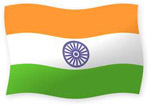
On the virtue of being a sacred and national flower of India, Lotus (Nelumbo Nucifera), has a prominent and significant position in the art and mythology of ancient India. Since time immemorial, the beautiful lotus is carrying the cultural pride and is representing the traditional values of India to the entire world. The lotus is standing as a symbol of mysticism, fertility, prosperity, knowledge and enlightenment. Long life, honor and good fortune are also being represented by the National flower of India. It grows in muddy waters and goes up above the surface to blossom.
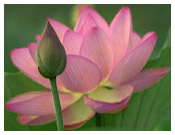
Purity of heart and mind is also symbolically represented by the lotus. The symbol of the almighty, the lotus, has a spiritual significance as well as the devotees use lotus quite often for the religious practices. The last and final lotus, according to the renowned Indian thought, is Charan Kamal or loutus feet of the almighty. The spiritual thoughts and the depth of thinking had forced the fathers of modern India to preserve and enshrine lotus in the establishment as the National flower.
The towering Indian National tree called Banyan, spreads its branches and provides shelter to its neighbors while its roots are even stretched to several acres. The well spread out branches, roots and trunks of the banyan trees most often form a tangle. The amount of years a banyan tree survives is definitely more than any other tree. It won’t be a bad idea to call it an immortal tree. There is probably no better place than the shelter of a banyan tree when you are tired and you badly want rest for some time. It saves you from the scorching sun. Indian residents pay tribute to this tree. In countless numbers of stories of the Nation, the banyan tree figures significantly.
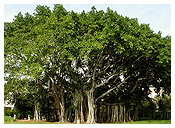
Hockey, the National game of India, was played by many stalwarts of India. There was a time when India used to rule the game and the world with hockey. It was the golden period of Indian hockey. The magic and skills of hockey players at that point of time were unmatched. The ball- juggling feats and dexterous players like Major Dhyanchand made people think that Indian players used some underhand means. In this golden epoch during 1928- 1956, India had won 6 successive gold medals in the Olympic Games.

Except few hilly and undulating lands, Mango, the National fruit of India, is cultivated almost in all parts of India. Mangoes are the rich source of Vitamin A, C and D and the names of mangoes had been seen in plenty of mythological tales of India. Very popular Indian poet, called Kalidas, sang and praised mangoes in his own language. It was not only Alexander; the taste of mangoes was also liked by Hieun Tsang. It is said that the great Mughal emperor Akbar had planted more than 1, 00, 000 mango trees in and around the territory of Darbhanga (Modern Bihar). Indian people like to savor the taste of the ripe mangoes. The taste of mango pickles is praiseworthy as well.
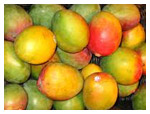
The National Anthem of India, Jana Gana Mana, was written by Bengali laureate Rabindra Nath Tagore. It is the first of the five stanzas of Brahmo hymn, written by the noble Bengali writer. Officially adopted by the constituent Assembly as the Indian National Anthem on 24th January, 1950, the National Anthem of India was sung for the first time in Calcutta (Presently known as Kolkata) session on 27th December 1911. The Constituent Assembly had decided “Jana Gana Mana” as the National Anthem instead of “Vande Mataram” due to political reasons.
The Royal Bengal Tiger, the National animal of India, is a bright yellow-colored striped animal with short coat. The scientific name of the Royal Bengal Tiger is “Tiger Panthera Tigris”. Royal Bengal Tigers stroll freely in their den of Mangrove forests. The National Animal of India, the Royal Bengal Tiger, symbolizes grace, potency, agility and enormous power. Royal Bengal Tiger is the pride of India. It represents prosperity of wildlife. Tigers are found in almost every corner of India except in north- western region and in the contiguous countries, such as, Nepal, Bhutan and Bangladesh.
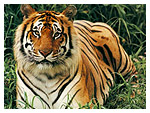
The promise of commitment to the Republic of India is the Indian National Pledge. In different public gatherings, such as, assemblies in several Indian schools, Independence Day and Republic Day celebration, Indians recite National pledge in harmony.
Try out the other sections